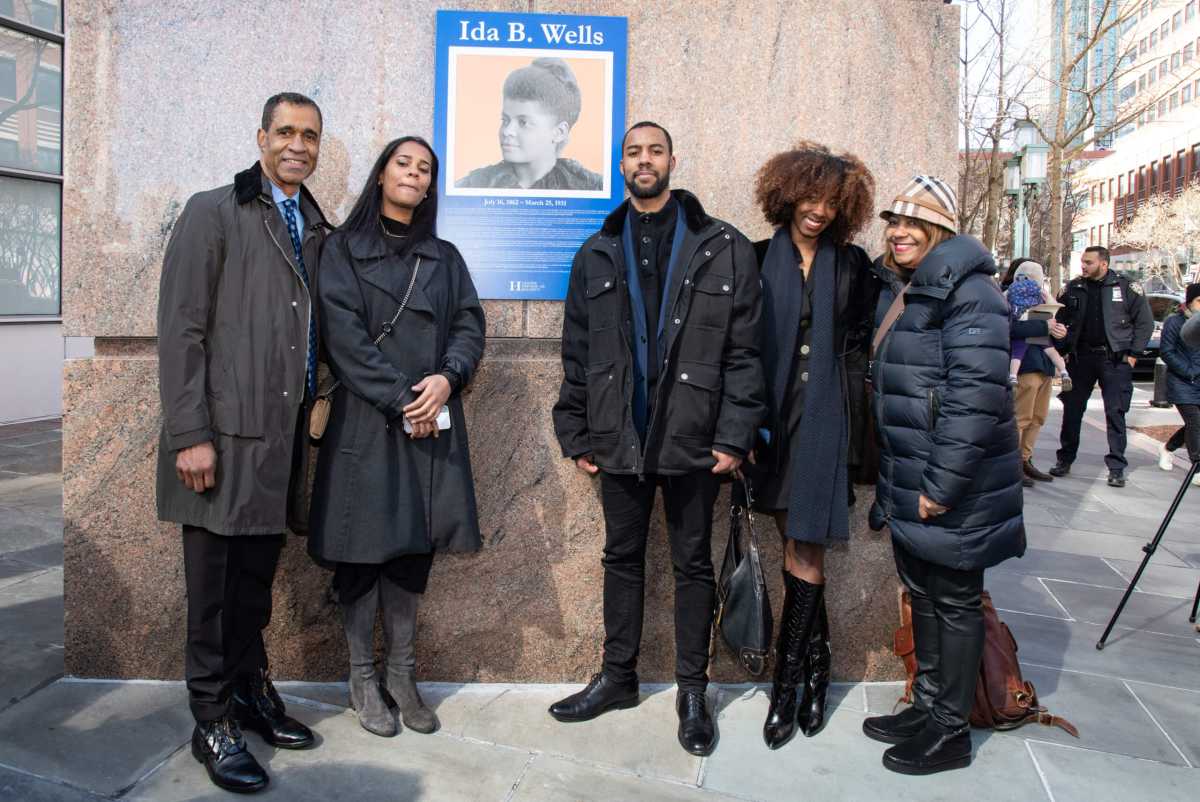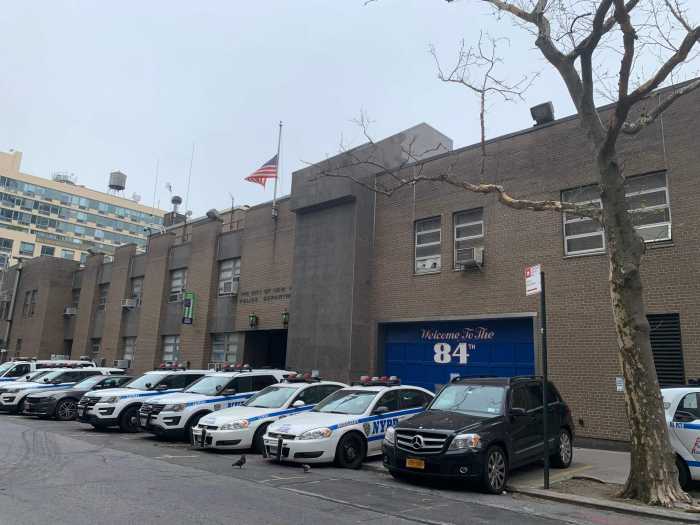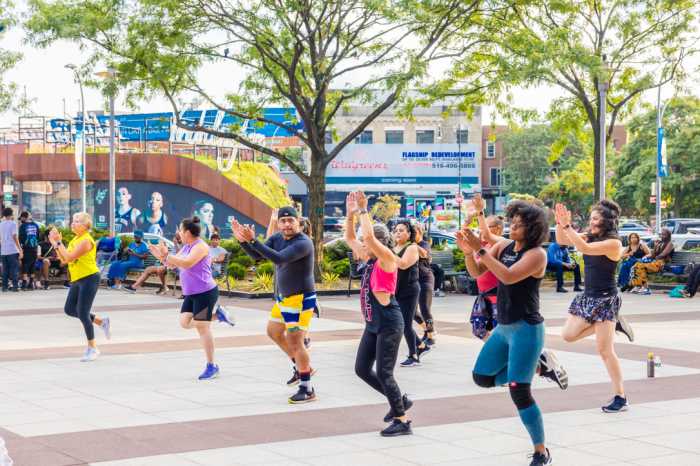Historians and activists gathered in Downtown Brooklyn on Saturday to rebrand Gold Street after 19th-century civil rights icon Ida B. Wells, who took up residence on the street during her prolific campaign against lynching.
“No stop on her journey was more important than Brooklyn,” said Dr. Paula Giddings, who authored Wells’ biography ‘Sword Among Lions: Wells and the Campaign Against Lynching.’
Civic leaders unveiled the official co-naming of the roadway as “Ida B. Wells Place” — complete with newly minted street signs at the corner of Myrtle Avenue, and an informational plaque detailing her life in the borough.
Born into slavery just months ahead of the Emancipation Proclamation, Wells fled Memphis in the 1890s after threats to her life, and took up residence in Kings County — where she published influential manifestos on lynching in the black newspaper New York Age.
During her time on Gold Street, Wells worked with other black female activists on several campaigns for civil rights and women’s suffrage, and co-founded the National Association of Colored Women in 1896, according to Giddings.
“It was in Brooklyn where a seed was sown to turn the gathering of women here to join others across the nation to form the first black national organization of women in the country,” she said.
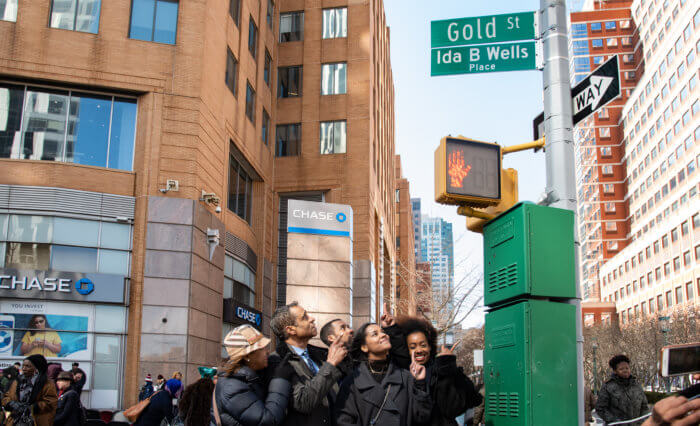
Wells’ great-grandson attended the weekend’s ceremony, and used the event to pay tribute to New York’s history of providing haven to refugees like his great-grandmother.
“She got so much love in Brooklyn, New York, as an exile in her own country the way New York has opened its heart to immigrants from all over the world,” said Benjamin Duster IV.
New York Times journalist Nikole Hannah-Jones claimed Wells’ legacy had been her inspiration for the newspaper’s 1619 Project, which commemorated the 400th year of of the first African slaves to arrive on American shores and reimagines the legacy of slavery in the United States.
“While I’d always see white men held up as a model of being an investigative reporter, here was this woman — literally born into slavery — who was doing the type of courageous investigative reporting that I hoped to do one day,” said Hannah-Jones.
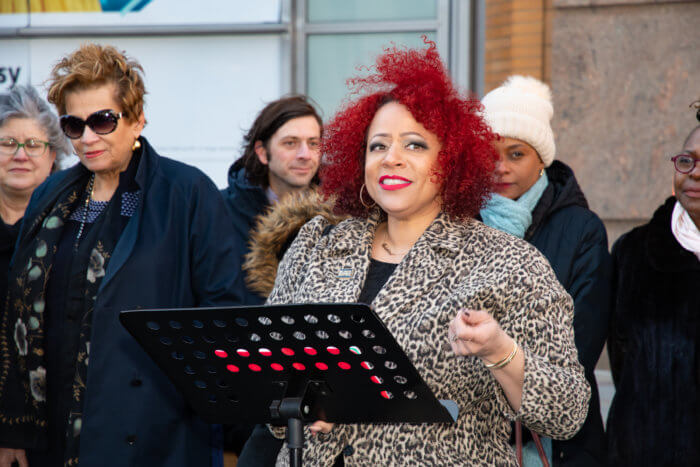
The Harlem Historical Society, which had been a driving force behind the push to honor Wells at her once-Brooklyn residence, is also pushing for several other civil-rights commemorations in the area — including co-naming a section of Duffield Street as Abolitionist Place, and a push to baptize the long-stalled park on Willoughby Street as Abolitionist Place Park.
The society’s director, Jacob Morris, also submitted a proposal to the city’s Economic Development Corporation to install a memorial dedicated to Wells and four other local civil rights activists at the planned green space.
“This is not the end,” Morris said. “We want a memorial at Abolitionist Place Park a block and a half away to honor Ida and her sisters in freedom.”


